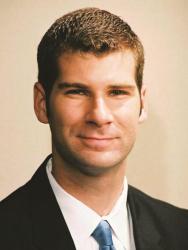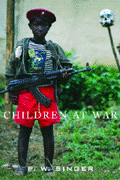Children at War is the first comprehensive book to examine the growing and global use of children as soldiers.
P. W. Singer, an internationally recognized expert on twenty-first-century warfare, explores how a new strategy of war, utilized by armies and warlords alike, has targeted children, seeking to turn them into soldiers and terrorists.
Singer writes about how the first American serviceman killed by hostile fire in Afghanistan-a Green Beret-was shot by a fourteen-year-old Afghan boy; how an American Special Forces medic was killed by a grenade thrown by a fifteen-year-old al Qaeda recruit; how suspected militants detained by U.S. forces in Iraq included more than one hundred children under the age of seventeen, and how hundreds who were taken hostage in Thailand were held captive by the rebel “God’s Army,” led by twelve-year-old twins.
Interweaving the voices of child soldiers throughout the book, Singer looks at the ways these children are recruited, abducted, trained, and finally sent off to fight in war-torn hot spots, from Colombia and the Sudan to Kashmir and Sierra Leone. He writes abut children who have been indoctrinated to fight U.S. forces in Iraq and Afghanistan; of Iraqi boys between the ages of ten and fifteen who had been trained in military arms and tactics to become Saddam Hussein’s Ashbal Saddam (Lion Cubs); of young refugees from Pakistani madrassahs who were recruited to help bring the Taliban to power in the Afghan civil war.
The author, National Security Fellow at the Brookings Institution and director of the Brookings Project on U.S. Policy Towards the Islamic World, explores how this phenomenon has come about, and how social disruptions and failures of development in modern Third World nations have led to greater global conflict and an instability that has spawned a new pool of recruits. He writes about how technology has made today’s weapons smaller and lighter and therefore easier for children to carry and handle; how one billion people in the world live in developing countries where civil war is part of everyday life; and how some children-without food, clothing, or family-have volunteered as soldiers as their only way to survive.
Finally, Singer makes clear how the U.S. government and the international community must face this new reality of modern warfare, how those who benefit from the recruitment of children as soldiers must be held accountable, how Western militaries must be prepared to face children in battle, and how rehabilitation programs can undo this horrific phenomenon and turn child soldiers back into children.
Authors

